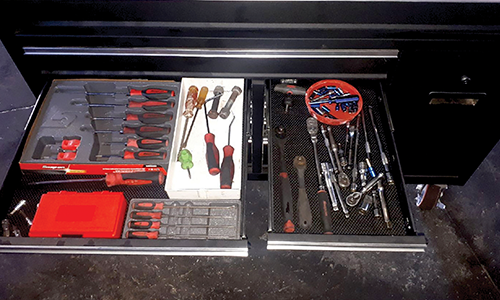Redefining the roles within the industry, November 9, 2018 — Recruiting young adults to enter the Collision Repair industry seems to be a bit of a struggle, at least in certain Canadian provinces.
Patrice Marcil, the chairman of the Canadian Collision Industry Forum explained that the registration numbers all depend upon the economy in each province.
“Right now, Alberta is short of registration because the oil industry is doing better- so many people go to that industry,” he said.
However, in Montreal there is a lot of registration because they have a night class, which allows young adults to work during the day and then attend class at night.
John Norris, the Executive Director of the Collision Industry Information Assistance trade organization in Ontario, released information indicating that Ontario hit record breaking registration this year with 746 apprentices enrolled.
Marcil stressed the fact that the economy plays a huge role in this situation, but so do the prices for tools.
Kyle Salmers, a 22-year-old first-year truck and coach technician apprentice, says that the cost of tools and equipment coming out of the student’s pocket is one reason as to why people might shy away from entering the industry in the first place.
“A good place to start would be a much bigger grant at the end of the school year for tools,” he said.
“Buying tools is crazy expensive and a huge reason why people wouldn’t even bother with it. A full set of tools is around $5,000- $8,000.”
“I’m in my first-year apprentice and I’ve already spent over 10 grand on the tool truck,” he explained.
Marcil said that this is another underlying issue that should be addressed by the industry in order to attract and recruit more young talent.
“It’s definitely a show stopper,” he added.
He pointed out that there are other trades such as construction where the tool boxes are cheaper, where as a collision repairer can spend up to $5,000 and expect to make lower wages when they first start out.
Marcil believes that the government should step in to do something to provide more incentives for students who want to complete the courses and buy the tools, or that students in this trade should be given special student loans for the tools they need.
The CCIF is working on different strategies and ways to beat this issue. The industry forum has been releasing surveys to students twice a year, for the past two years, to gather a better understanding as to what students are looking for in terms of the collision repair field.
They also have a strong belief that there is a misconception about this trade. Many people believe what they see on television. They think that in this industry there is only one role and that role demonstrates bad and dangerous work environments, low wages, and an overall poor quality of life; when in fact there are so many more roles to the industry now, Marcil explained.
There are customer service representatives, appraisers, technicians, mechanics, the list goes on.
“Roles have changed,” he said.
So in response, the CCIF has been working on short 30 second video segments to post onto their social media platforms, showing young adults in various positions within the industry. This brings awareness for young talent looking into this industry and hopefully some more attraction nationwide.
“I think that’s what the industry is about,” Marcil added.
























